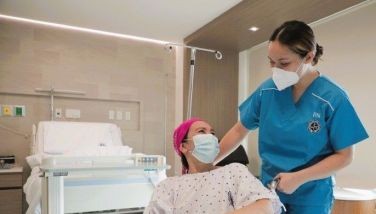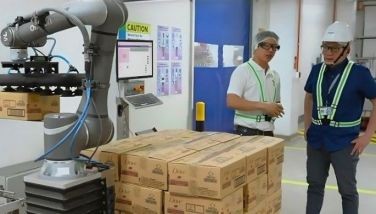Rankings

Whenever those annual global university rankings come out, Philippine school administrators point out that the methodology is suspect. While they take note of the rankings, the administrators say, they question the reliability of the evaluation system.
The World University Rankings first came out in 2004, courtesy of a London-based company with the tongue-twisting name of Quac-quarelli Symonds (QS). The rankings were published online by the Times Higher Education (THE) Supplement, to serve as a guide for those who wanted to study in universities outside their own country, including those who wanted to obtain postgraduate degrees.
THE itself questioned the ranking methodology and split from QS in 2009. The next year, THE released its own Times Higher Education World University Rankings.
In Asia, only the top 150 universities are listed by rank. Since 2004, the state-run University of the Philippines in Diliman has maintained the highest rank among the schools here, but its rating has always been middling. The two others that have consistently made it to the top 150, Ateneo de Manila and De la Salle, have always ranked many notches lower than UP.
Some critics have noted that the QS and THE rankings are heavily biased in favor of universities in affluent economies. In overall ranking worldwide, critics also point out that there is an apparent bias for universities in countries where English is the first language. There are critics who put the ranking firms in the same category as the credit rating agencies following the US financial crisis that started in 2007.
The QS uses six indicators: academic reputation, employer reputation, faculty-student ratio, citations per faculty, international faculty, and international students.
UP was opened by the US government along Padre Faura in Manila in 1908, with the agriculture college in Los Baños, Laguna. The campus in Diliman, Quezon City became fully operational only in 1949. As far as I’m concerned, that spacious campus, with its acacia-lined roads, can compete with some of the best in the world, and I’m not writing this simply because I’m a biased alumna.
The QS assessment focused on UP Diliman, and it’s not clear if UP satellites were taken into consideration, because a number of these schools specialize in certain courses. UP Los Baños, for example, focuses on agriculture, agro-industrial technology, forestry and environmental management, veterinary medicine and related fields; the medical school is in Manila, and UP Manila also has it special science courses.
What is more complicated to assess is the quality of the education offered. Judging from the skills of several UP graduates of English, journalism and related courses who applied for jobs in our paper in the past years (and were turned down), I believe UP students have not escaped the general deterioration in English proficiency among Filipinos.
But English proficiency in this country is something that is not learned overnight — or even over four years — in college. It has to start at an early age, particularly in the household itself.
Why is it that older generations of Filipinos seem to have a better grasp of English? During their student days there were many teachers who were native English speakers, both in private and public schools. Filipinos who learned from these native English speakers and later became teachers themselves passed on their language proficiency to their students. I saw this kind of proficiency among ordinary folks in Sagada during my recent visit; I was told that they learned fluent English from missionaries.
In the past few decades, the entertainment industry also played a critical role in the development of a version of English that only Pinoys can understand. The Philippines is supposed to be the second largest English-speaking country in the world (after the United States), based on population size, but English proficiency is vastly limited for the average Pinoy. We have failed to develop true bilingual skills, and we mangle both English and Filipino as we switch from one language to the other in ordinary conversation.
But you don’t judge the quality and level of education based on English proficiency alone. A better gauge is the quality of the Philippine workforce and national competitiveness, which affect a more quantifiable factor, economic development.
* * *
If we go by economic indicators, and link them with the university rankings, we can conclude that there’s a wide room for improvement among higher learning institutions in this country.
There are still many highly educated and competent Filipinos. But today, quality education has become a luxury for millions of our people. The poor have a chance to be educated in UP, which continues to produce top-caliber graduates. But beyond this, only the children of that tiny fraction of the population that controls wealth and power in this country can afford to attend those universities ranked among the world’s top 700 in the QS rankings.
The problem shows in the quality of the skills of our biggest export, our workers. While there are Filipinos working as highly paid managers, doctors, engineers and IT designers abroad, most of our overseas workers occupy the lower rungs of the employment ladder. We’re graduating from being the world’s maids and nannies to nurses and chefs, but other developing countries are sending workers with higher skills overseas.
A good measure of growing economic prosperity is when migrant workers start returning to their own country because of better opportunities in their own land. It happened in Brazil, now Latin America’s economic powerhouse, and it’s happening in China. We’re still a long way from this.
It’s no coincidence that in Asia, the top-ranked universities are those in the most advanced economies. The Hong Kong University of Science and Technology topped the Asian list of the QS Intelligence Unit, followed by the National University of Singapore. It’s also no coincidence that Hong Kong and Singapore are also the perennial rivals for top rankings in international surveys on competitiveness and good governance indicators.
Ahead of UP Diliman are universities in Japan, South Korea, Taiwan and China, now the world’s second largest economy (or still third after Japan, for those who believe Beijing is fudging its figures).
Their governments are investing heavily in public education, with incentives given as well to private sector investments. Singapore, which wants to position itself as a regional education hub, has liberalized its education sector. Its schools have partnered with world-class institutions such as Harvard Kennedy School for programs offered in the city-state. We can use a similar set-up, so that Filipinos with the brains but not the financial means can obtain an Ivy League education. But education is one of the sectors closed to foreign investors under our Constitution.
As in many other aspects of national life, the quality of education in the Philippines may not be getting worse. It’s just that other countries are doing much better, and working to be even more so.
- Latest
- Trending


























